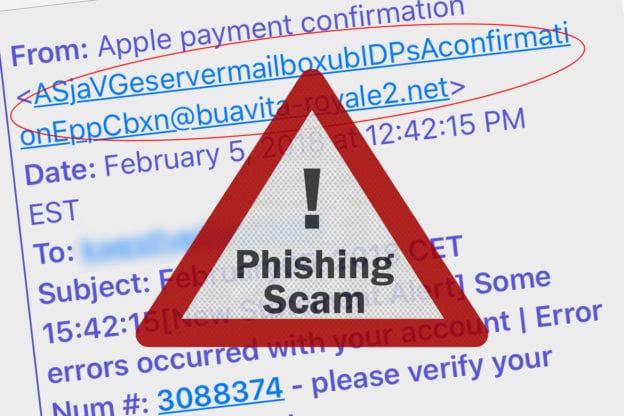Gone Phishing: Don’t Let Scammers Lure You In!
Identity theft… by now, you’re probably well aware that there is a vast global network of criminals who make their livings by stealing people’s social security numbers and other personal information, setting up false accounts, and essentially ruining unsuspecting victims’ credit and/or draining their bank accounts. Unfortunately, these cybercriminals are highly sophisticated and adept at tricking even intelligent individuals. One of the common and effective methods these scammers use is e-mail phishing.
What Is Email Phishing?
E-mail phishing is the practice of creating an e-mail that looks and sounds like an email from a legitimate company, but that is really being sent by a cybercriminal to try to collect sensitive data such as credit card information, social security numbers, passwords, etc. A cyber criminal may, for example, create an email template that looks like it is being sent from your Internet provider. A phishing email may ask you to validate your payment details, click on a link to confirm your identity, or provide an alternative credit card for payment.
At first glance, these emails may seem legitimate. Scammers often duplicate the graphics and verbiage of the company they’re spoofing. However, if you know what to look for, you’ll be able to identify that a seemingly authentic email is actually a phishing email.
Telltale Clues
Cybercriminals who are phishing want you to believe they are sending you an email from Facebook, Yahoo, Chase Bank, etc. One of the easiest ways to spot a phishing scam is to look carefully at the sender’s email address. Instead of “server.Facebook.com” a phony email may come for “server.Facebook.con”. Or, hackers may license a domain name similar to a legitimate domain name. If a company has a “w” in the domain name, a hacker will use “vv” instead of w – which isn’t immediately noticeable.
Other red flags that an e-mail isn’t what it seems to be? Be very leery of an email that includes misspellings, threats to close your account if you don’t reply, and links you’re directed to click on.
Always Verify and Authenticate Before Clicking or Sharing Data
Cybercriminals are becoming increasingly savvy. The only surefire way to protect yourself is to be suspicious of any email asking you to take action. Scrutinize the sender’s email address and do your own quick online search to make sure it is identical to the company it’s purporting to be from. Better yet, if you’re ever uncertain, conduct your own search for the supposed sender’s phone number and call the individual or person to seek verbal confirmation that whatever request has been emailed to you is legitimate.




